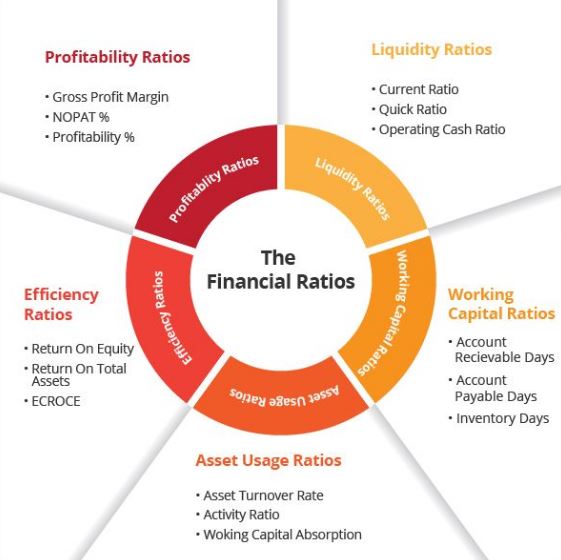Global Development in China
According to Yang (2016), global development is a wider concept concerned with the level of development of a state weighed on an international scale. Reflecting on global development with China as our case study, we would consider the position in which China’s development can be placed on an international scale. On the other hand, social capital reflects on the relations which can guarantee a nation some competitive advantage over the other nations. Effectively employed social capital creates a good environment in which a nation can thrive (Fine, 2010). This essay focuses on the relationship between the communism and religion and how minorities are treated in China.
In the bid to increase the rate of development within a nation, the aspect of social capital cannot be overlooked. Besides being a core factor to establishing togetherness, social capital ensures all the components of an economy are made available. For example, in the case of China, religion offered many confrontations to the communist which makes it difficult for the leaders to rule with no ideological sanction. With social capital, the fundamental cultural will be incorporated in a nations’ development agenda that guarantee goodwill and commitment from the stakeholders (Fine, 2010).
With no doubt, democracy is the sole factor which contributes significantly to instilling cooperative civil societies and functional social capital. According to Fine (2010), democracy as the rule of the people by the people ensuring all the agenda of the community is presented for consideration during decision-making. Apparently, development is a very sensitive agenda that calls for participation of all the society members; with which a ruling government has high control over what a nation can achieve. Hence democracy comes in to harmonize and present the demands of people creating an effective civil society.
Lack of social capital offers a huge bearing on the ability of a state to develop. This aspect can be justified when a society is not oriented for the same purpose; some of the political leaders, in this case, are more self-centered other than providing the service they were destined by the citizens. Usage of patronage highly denotes that a society tends to put into power those that provide them with incentives. On the other hand, corruption kills efforts as most of the capacity to develop a nation ends up in the hands of a few individuals (Lovell, 2005).
Chinese Global Development
A state which has high development capacity is at a higher chance of establishing and maintaining better social capital. With the virtual of having a promising development direction, a nation will attract more social capital from neighboring nations which constitute significantly to the sustainable future development. Whenever a state capacity is directed towards achieving the development agenda, a greater pool of social capital will be influenced (Lovell, 2005).
In terms of global development, China is the largest united multi-national state which has about 56 different ethnic groups. Among them, 91.59% are the Han Chinese while the other remaining 55 ethnic groups comprise about 8.41% (Fifth National Population Census of 2000). 8.41% presents the minorities who live in China. With a population of about 1159.4 million, the largest ethnic group, Han Chinese is found in most of the parts of China. Nevertheless, they are mainly found in the lower and middle reaches of Yangtze River, Yellow River, and Songliao Plains (Fifth National Population Census of 2000).
In the world, generally, no single nation which can boast of establishing a very good record in relation to the issue of treating minority groups. China is not exceptional. The treatment of minority is not fairly evaluated on the basis of sociological and political standards. However, there exist policies that protect the minority from further exploitation. The minorities in China are protected under the regional autonomy to settle in multiple regions. Such regions include; Ningxia, Tibet, Xinjiang, Guangxi, and Mongolia (Guo, 2008).
According to China’s State Council, China has maintained ancient forms of religion, such as Taoism and Buddhism. However, with increasing radicalization, the country’s belief system is taking a new edge and becoming increasingly diverse. About 61% of the Chinese population comprises the people who are strict followers of Atheism, 26% are followers of Confucian Philosophies, 6% adheres to Buddhist, 2% adheres to Christianity, and about 2% follow Islamic belief. These religions, however, raised many traction with communistic policies as every branch hold a diverse view on work, religion, and political leadership.
In conclusion, global development, social capital and civil societies are a perfect combination that a nation can use to make leverage of development capacity. With an efficient social capital, a nation is at an upper hand to attain its development agenda compared to another that has no goodwill with its social capital. In regard to China, the existence of many ethnic groups has ensured a huge pool of social capital which can be attributed to its massive growth and development. Corruption and patronage can be blamed for dragging a country’s development agenda backward. Whenever political regime is not oriented towards delivering the demands of the citizens, ethnicity will be bound to occur since there is no uniting factor to bring the people together for a common goal and increase Global Development ambitions.
References
Fifth National Population Census (2000) China’s Population Demography and Ethnic Groups.
Fine, B. (2010). Global Development China, Social Capital versus Social History. In Theories of Social Capital: Researchers Behaving Badly (pp. 90-109) Pluto Books.
Guo, X. (2008) State and Ethnicity in China’s Southwest and Global Development in China. Leiden: Brill.
Lovell, D. (2005) Corruption as a Transitional Phenomenon: Understanding Endemic Corruption in the Post-Communist States. In Haller D. & Shore C. (Eds.), Corruption: Anthropological Perspectives (pp. 65-82) Pluto Books.
Yang, F. (2016) “From Made in China to Create in China”: Nation Branding and the Global-National Imaginary. In Faked in China: Nation Branding, Counterfeit Culture, and Globalization (pp. 31-63) Indiana University Press.

Other Relevant Blog Posts
Counterfeit Products Chinese Consumers
Consumer Behaviour China Automobiles
Emerging Markets FDI China Dissertation
Chinese Business Dissertations – Click To View
MBA Dissertation – Chinese Business Culture – This dissertation aspires to contribute to an understanding of the nature and pace of change in China’s business culture and the implications of such change for the country’s business environment and global development. China’s emergence as a nascent economic superpower is the subject of increasing attention and focus among contemporary observers of international business and international relations.
The effects of China’s transition from communism to capitalism have become increasingly pervasive and far-reaching. China’s transformation has, however, been accompanied by an underlying tension between on the one hand the need to embrace foreign concepts and practices in the interest of economic development and on the other a wariness of the outside world, which is attributable to a distinctive cultural heritage and a legacy of foreign exploitation and subsequent isolationism in China’s modern history. This dialectic of modernity and tradition raises interesting questions about China from a business culture perspective. The search for an optimal balance between continuity and change is an ongoing challenge, which every society faces.
Dissertation Comparative Analysis Into India and China as I.T. Outsourcing Destinations – Globalization of economies over the past decade has given rise to intense global competition and has compelled business managers to improve their quality and to reduce the cycle time in introducing new products and services. Improvement in the field of telecommunication and data transmission has fostered the growth of the phenomenon of Outsourcing in which corporations are seen to outsource their non core processes to low wage economies like India and China.
This is done on a very large scale by global corporations, not only to take advantage of the labor arbitrage but also to enable them to concentrate on their core processes, thereby resulting in reduced lead-time in the introduction of new products. The main research problem is to compare the two countries with an aim to finding out which of these economies is better poised to seize an increasing share in the global IT-ITES operations while taking global development into account.
Investigation into the Real Estate Industry in China – Real Estate Industry (REI) is pivotal to China’s economic development which relates to people benefit, entrepreneur development and country safe. REI relates with many industries and develops into one of major industry. Development of China REI on the one hand lacks of funds and exists on the need for foreign capital; on the other hand, the existence of international hot money ensures adequate space for foreign capital to stay into. With China’s accession to WTO, it gradually increases the degree of opening up in REI, its opportunities and challenges both exist.
REI is considered as China’s last violent industry in many institutions’ and individuals’ eyes. Therefore, foreign investors have accelerated efforts to develop China REI. However, the inflow of foreign capital is a double-edged sword and has both positive and negative effects existing. To REI, many research in foreign investment has been done, the research of foreign investment in Real Estate has been rarely done. REI has become more and more important in China, so it is necessary to make a research on this subject.
International Business Entry Mode in China – Today economic globalization is far more intensive, rapid and to develop the domestic economy through utilization of foreign capital flow is becoming a country’s common objective. Foreign investment becomes an essential part for the healthy growth of the host country’s economy, but the attitudes and the policies taken by the host countries especially the developing countries are varying. Therefore it is important to learn and know the attitudes and policies of the host countries for foreign firms before making investment. In addition, the country’s culture and market environment greatly affect different types of entry modes.
This dissertation explored the characters of different types of entry modes and seeking through various aspects that affect the decision making on choosing the right form of entry mode in China. Now China becomes the largest country in attracting foreign capitals among developing countries. A comprehensive examination and adjustment of China’s strategies in utilization of foreign capitals has been an important topic that cannot be ignored.
External Finance and Firm Performance : Evidence From China – The important role that financial institutions play in promoting firm growth and firm performance has been demonstrated by substantial empirical research based on both cross-country and within-country studies. However, firms have achieved considerable success in many developing economies where the financial sector is far from established. The experience of China’s economic development seems to present a counter-example to the literature on financial institutions and development.
Despite inadequacies in the country’s formal financial institutions such as banks and stock markets, China has been one of the fastest growing economies in the world. This appears to suggest that alternative channels of finance have been a substitute for formal financial systems and supported the rapid development of China’s firms. One widely suggested mechanism in the literature is that firms in developing economies such as China rely to a large degree on alternative external financing, such as trade credit and foreign capital.
What challenges Textile structure of Shandong Province Face in the Developmental process of Industries? A Study of Textile Industries in Shandong Province China? – In the modern era of global development, China’s influence in the world economy was minimal until the late 1980s. At that time, economic reforms begun after 1978 began to generate significant and steady growth in investment, consumption and standards of living. China now participates extensively in the world market and private sector companies play a major role in the economy. Since 1978, hundreds of millions have been lifted out of poverty, according to China’s official statistics; the poverty rate fell from 53% in 1985 to 2.5% in 2010.
However, 10.8% of people still live on less than $1 a day (PPP-adjusted).The infant mortality rate fell 39.5% between 1995 and 2010, and maternal mortality by 41.1%.Access to telephones during the period rose more than 94-fold, to 57.1%. China has generally implemented reforms in a gradualist fashion. As its role in world has steadily grown, its importance to the international has also increased apace. China’s foreign trade has grown faster than its GDP for the past 25 years. China’s growth come both on huge state investment in infrastructure and heavy industry and from private sector expansion in light industry instead of just exports, whose role in the economy appears to have been significantly overestimated.
In 2008 thousands of private companies closed down and the government announced plans to expand the public sector to take up the slack caused by the global in the capitalist world. Shandong Province as an important component of China’s textile industry, global development, its development process and challenges has the value of research and study.
Analysis into the Consumer Behaviour Characteristics of the Chinese Automobile Industry – China is the biggest consumer and producer of automobiles in the world today. In spite of this, there has not been enough research performed in the field of Chinese consumer behaviour within automobiles industry in China. This particular study investigates the significance of country image and country of origin in Chinese consumer purchase intentions and evaluations of automobiles.
The respondents were located in different cities of China who were surveyed. Conjoint analysis had been used for deriving the significance of country of origin compared to other attributes in making preference judgments whereas multiple regressions were used for deriving the significance of country image in the purchase intentions. It was seen that country of origin is as significant as brand name and more significant than safety, reliability and price in making product evaluations. It was also seen that workmanship, reliability and superior prestige were the most significant reasons for the purchase preferences of the Chinese respondents for the foreign automobiles compared to the Chinese brands.
Global Development Relevant Links
MBA中国学位论文
Did you find any useful knowledge relating to Global Development in China in this post? What are the key facts that grabbed your attention? Let us know in the comments. Thank you.




